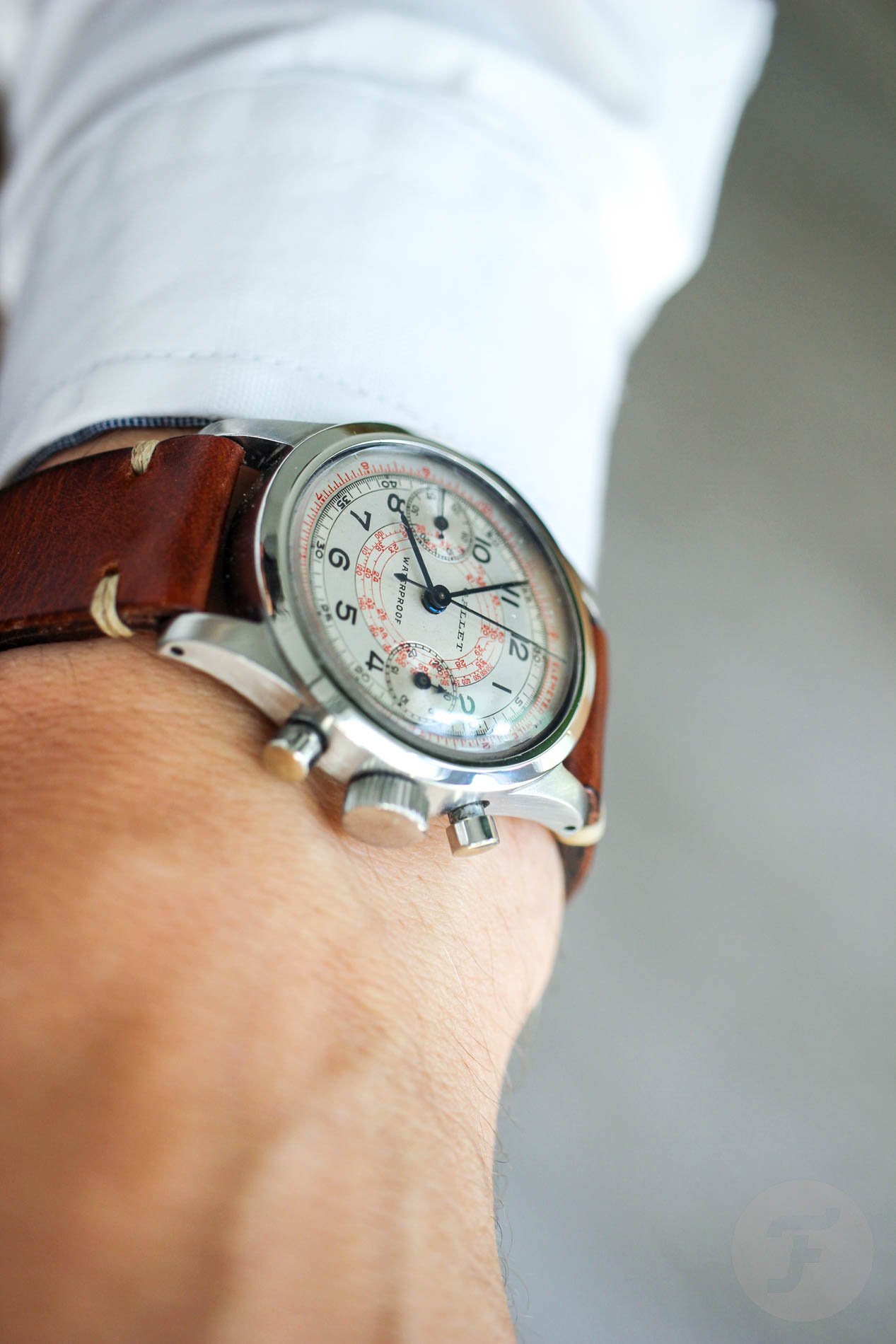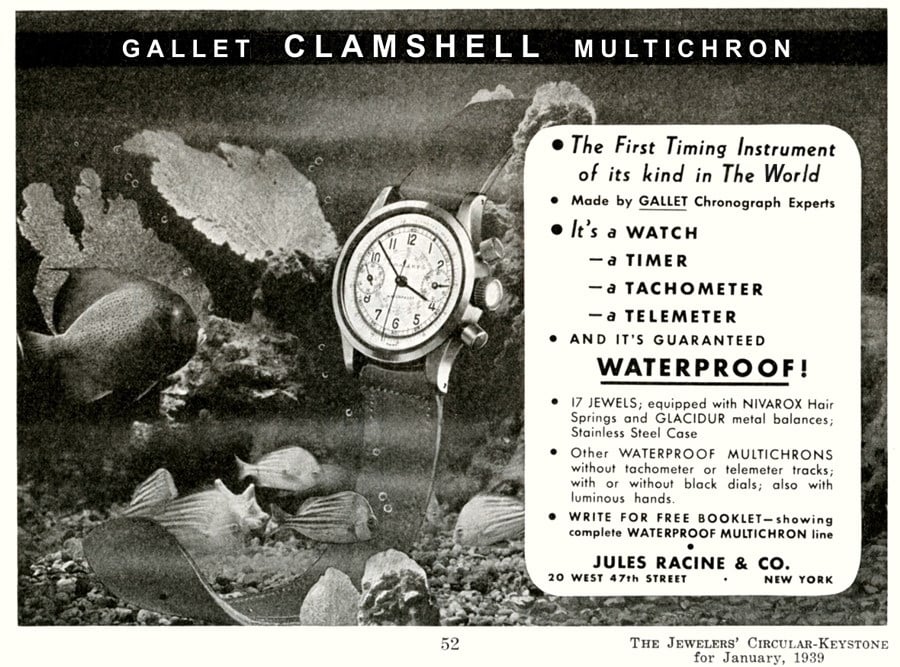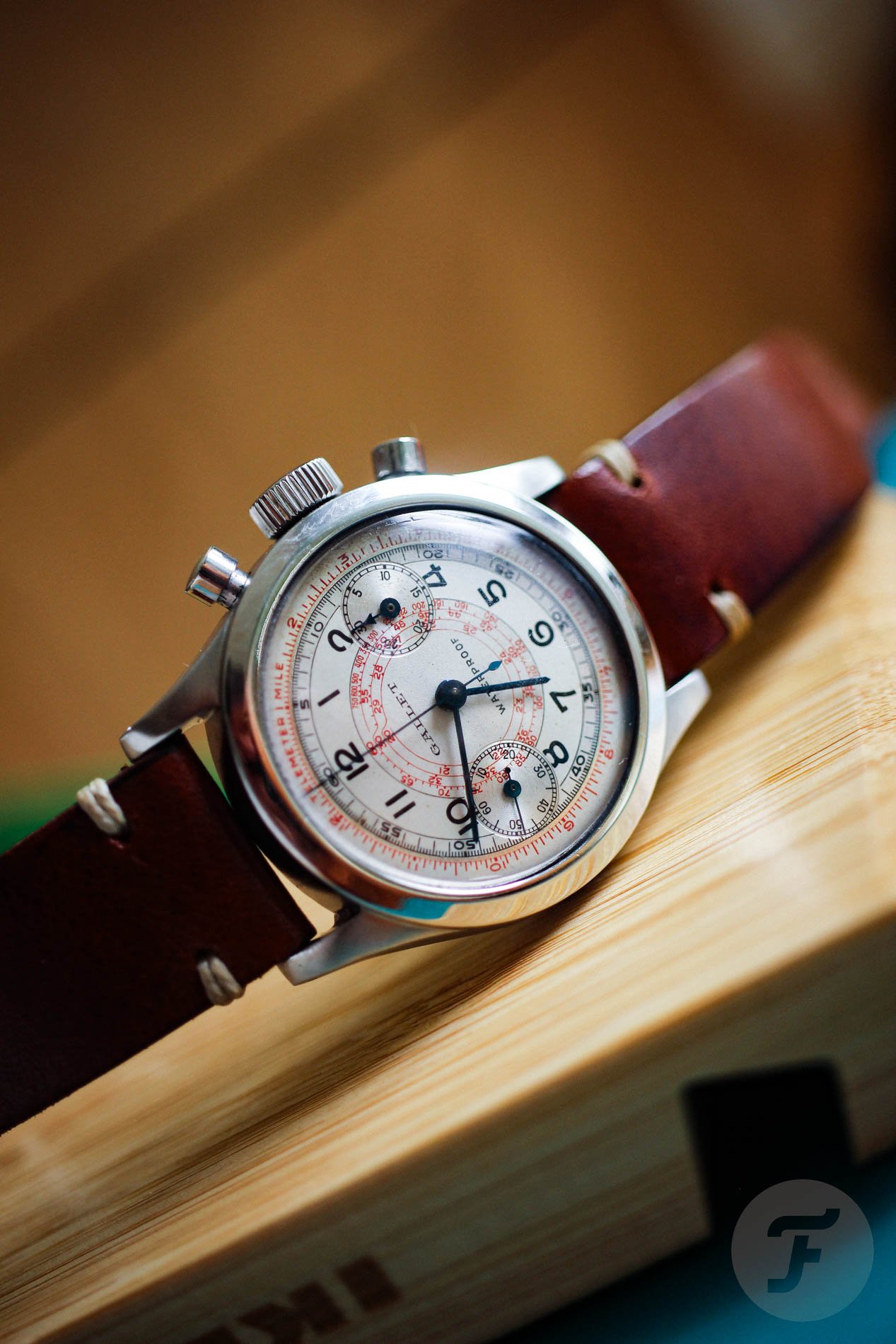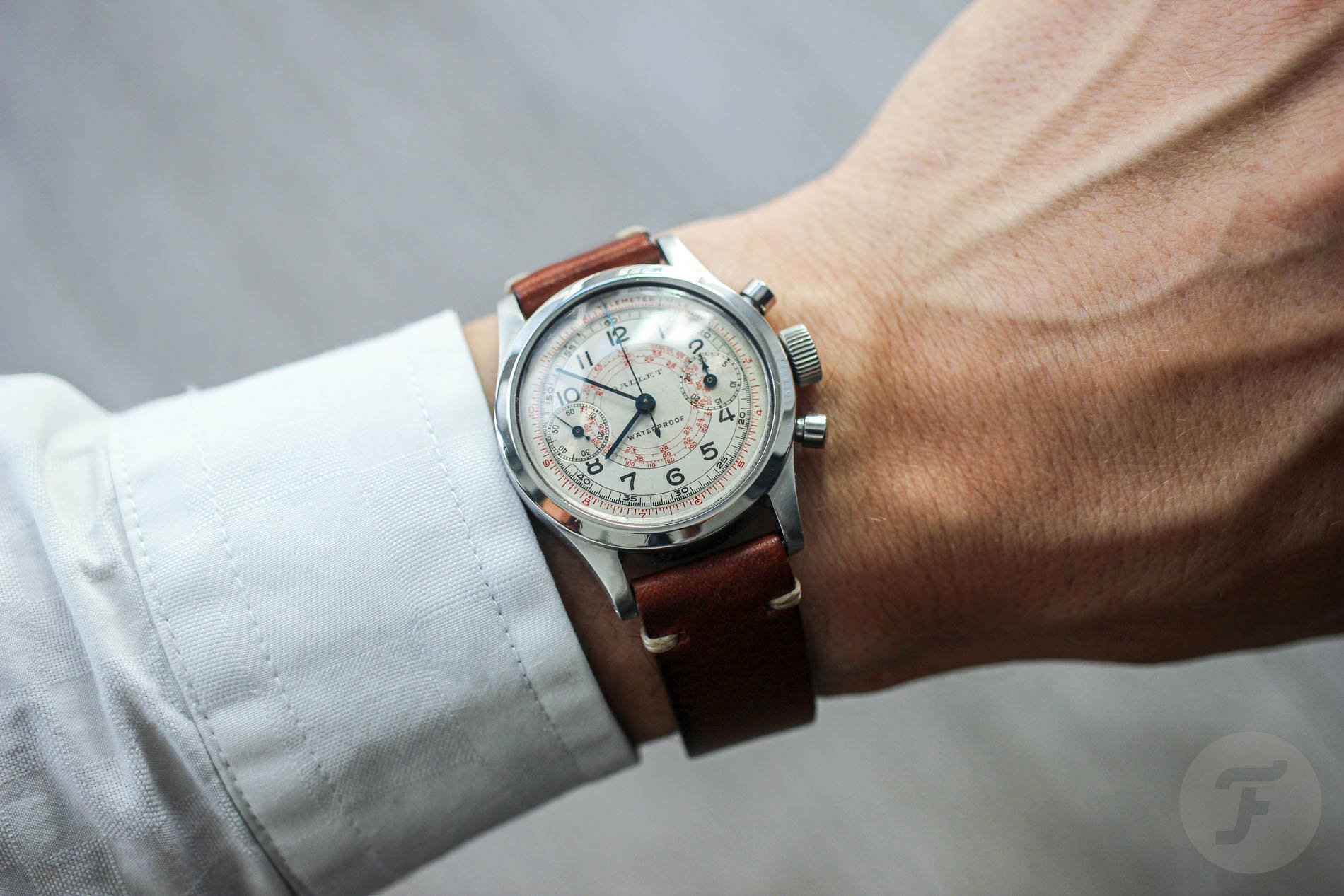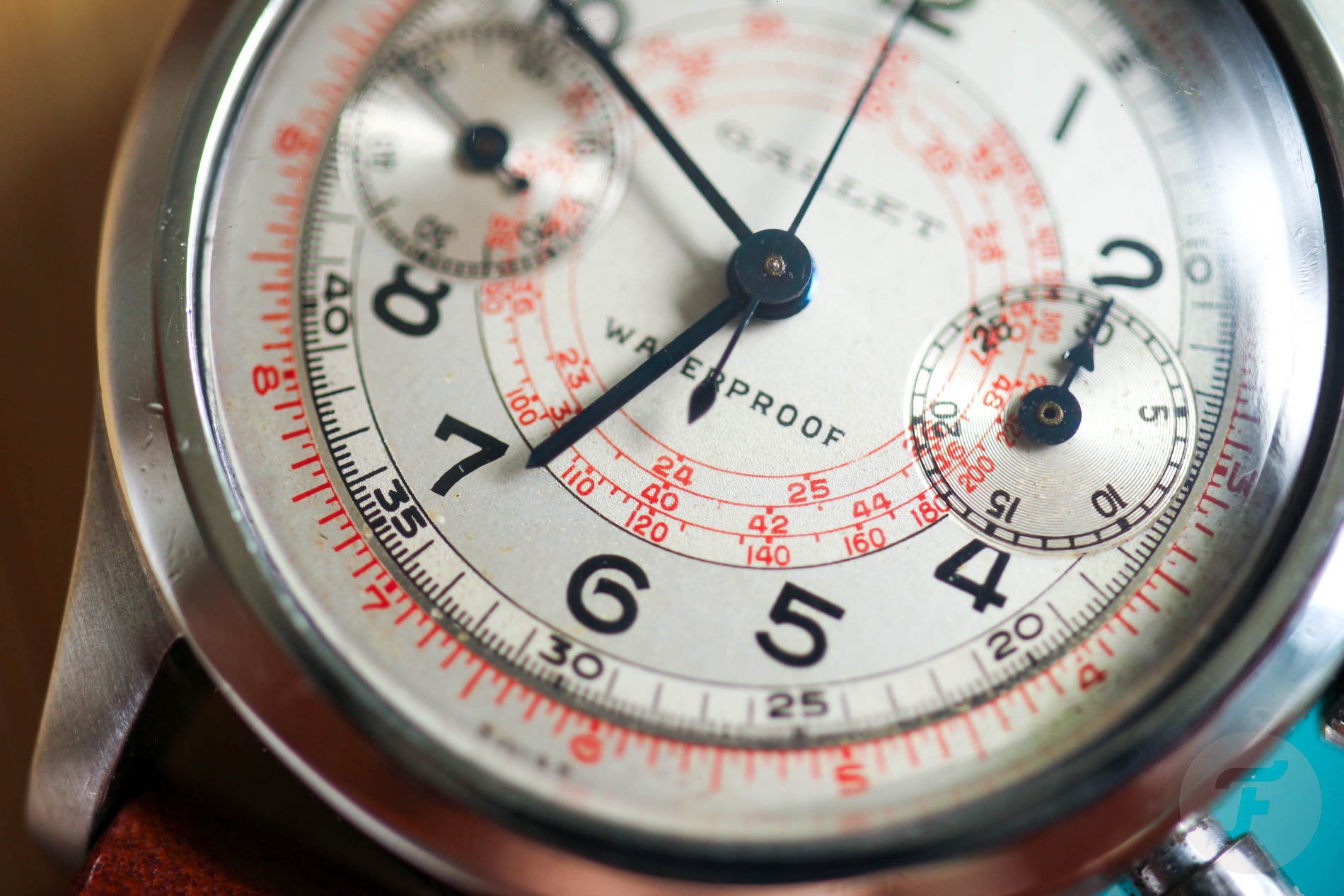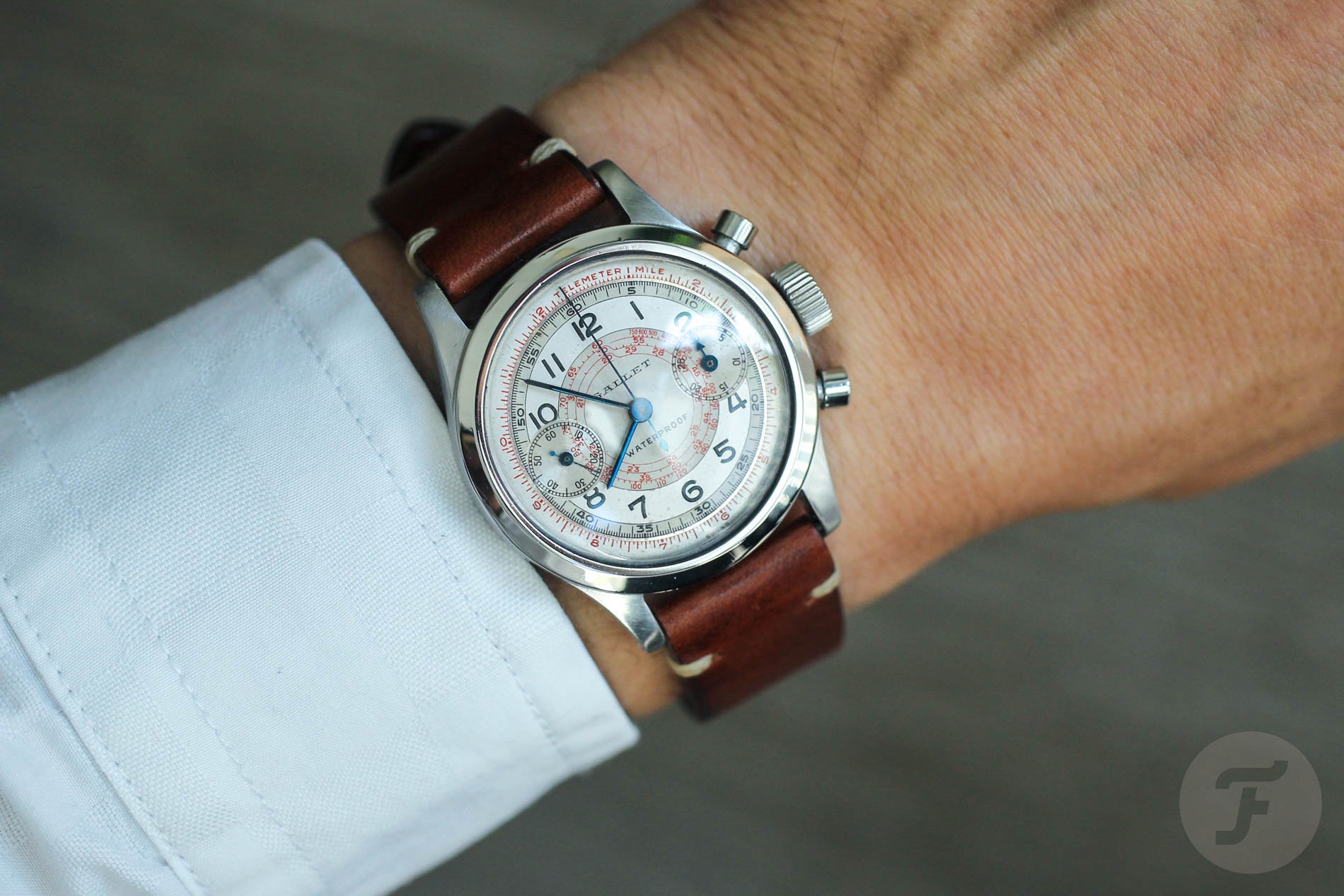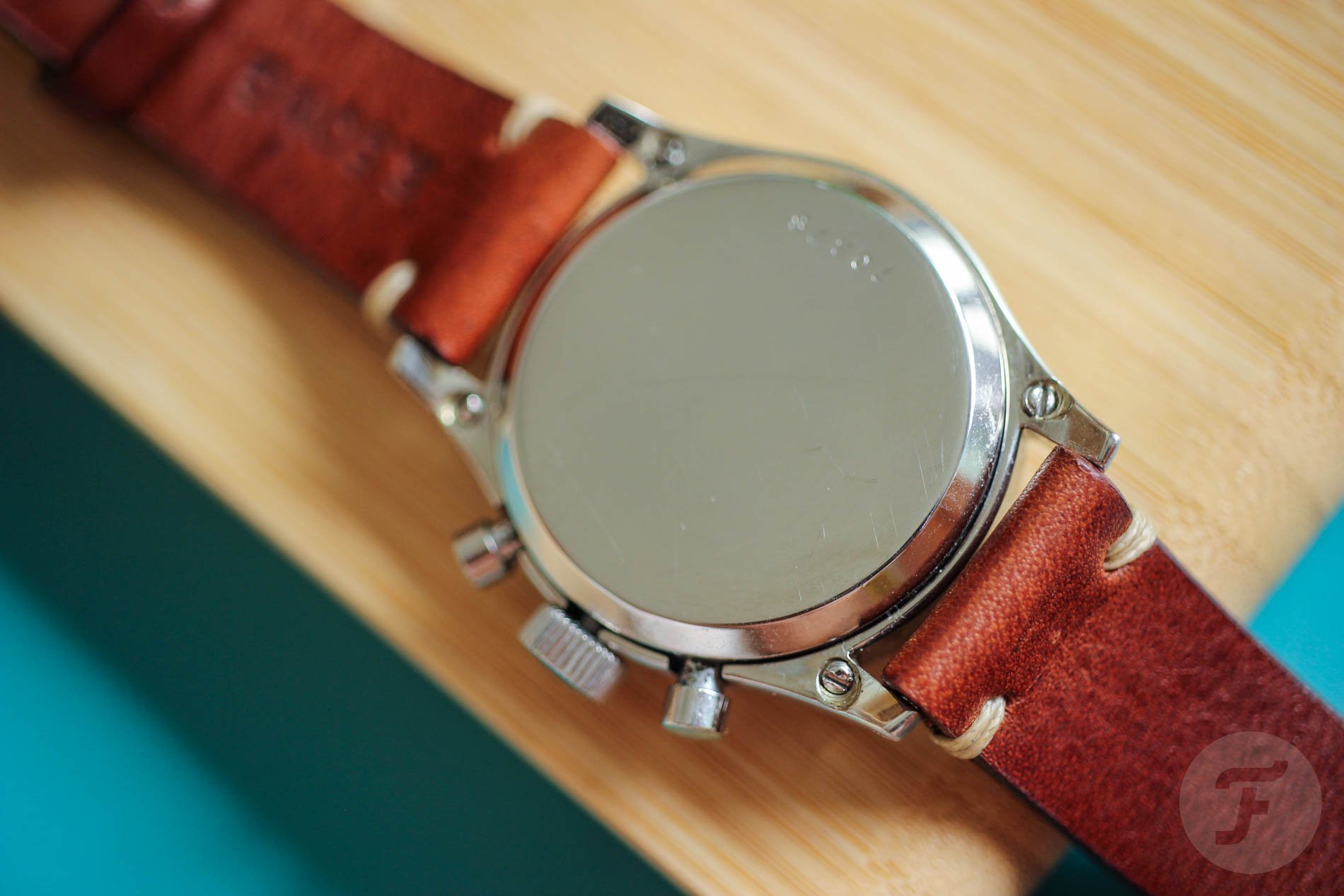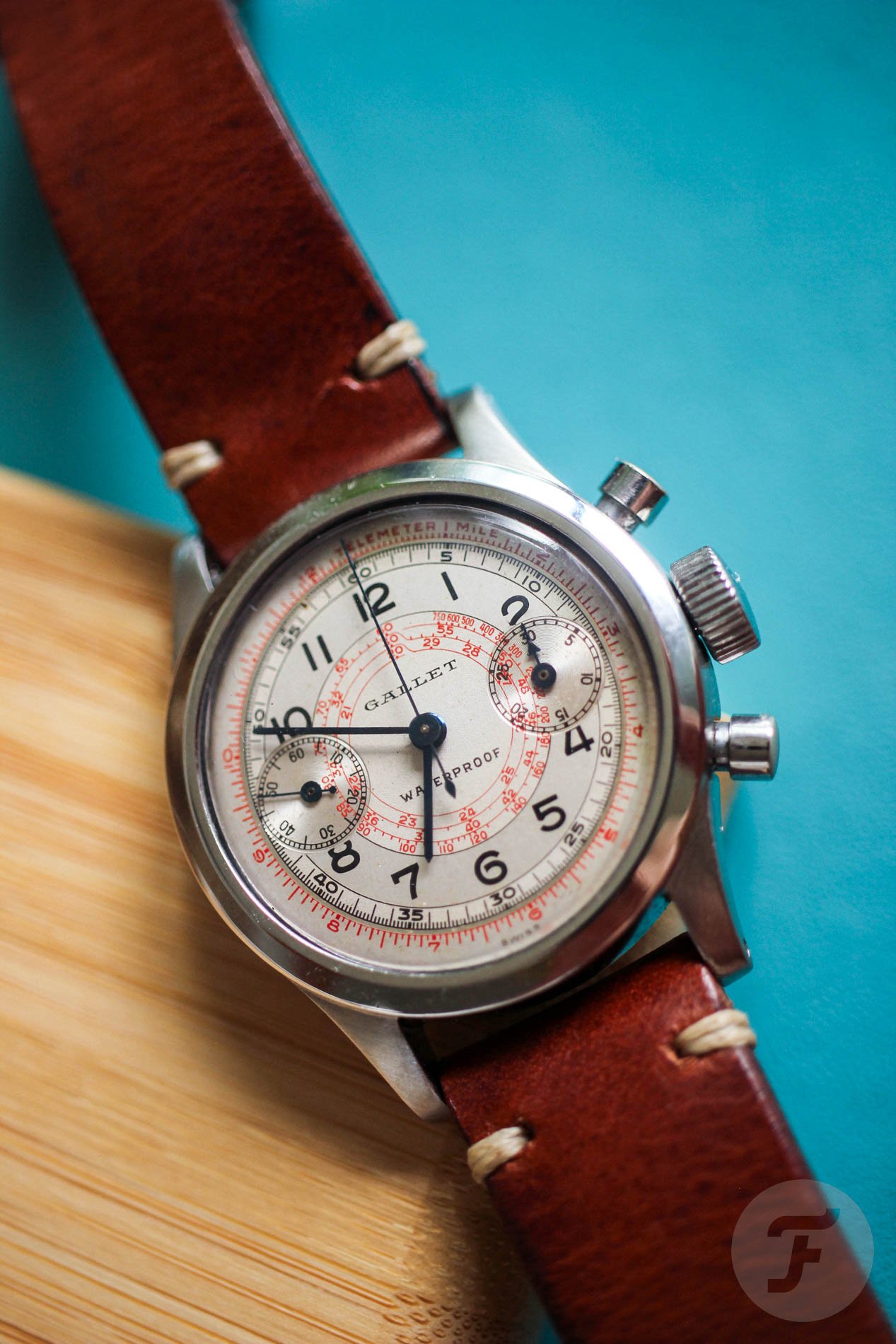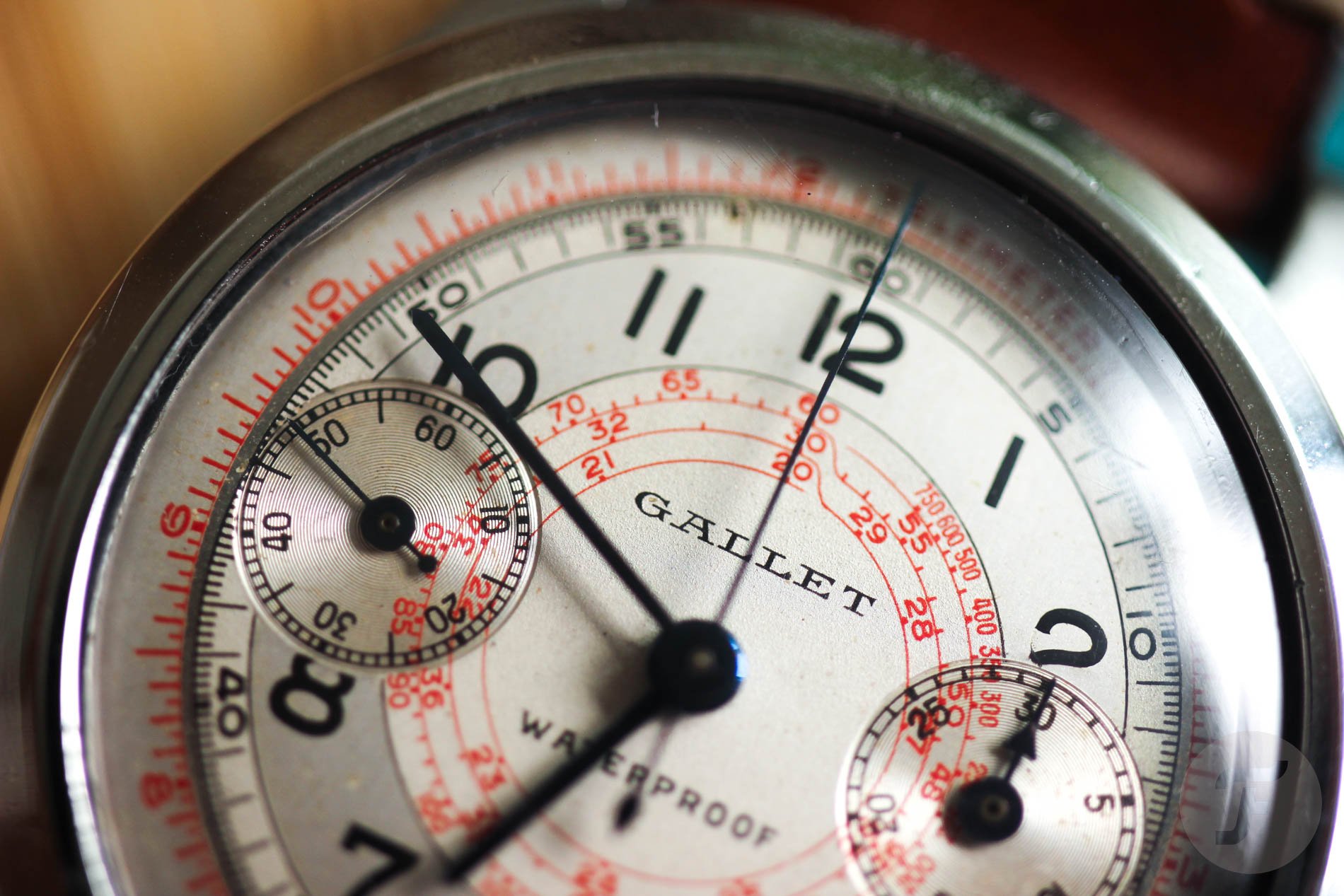#TBT The Waterproof Gallet Clamshell Multichron 30 — 34mm Of Perfection
The Gallet “Clamshell” Multichron 30 is one of my favorite Gallet chronographs. It is so perfectly balanced that it makes 37mm look meaninglessly big, and I mean it. Not a single one of my 34mm watches gets as much wrist time as this does.
All of the so-called “Clamshell” chronographs are highly regarded among collectors. However, the Gallet “Clamshell” Multichron 30 (or, simply, Gallet M30) holds a special place among them. Introduced in 1939, supposedly, it was the world’s first waterproof chronograph.
A Clamshell-shaped hole
I could not believe my eyes when I checked Fratello’s #TBT archive a few days ago. Honestly, I was almost sure we had written about these legendary chronographs before, but there seems to be no article about them. I thought Mike had published something before I took up the #TBT torch in 2019, but he didn’t. And neither have I in the last few years, so we have to fix that!
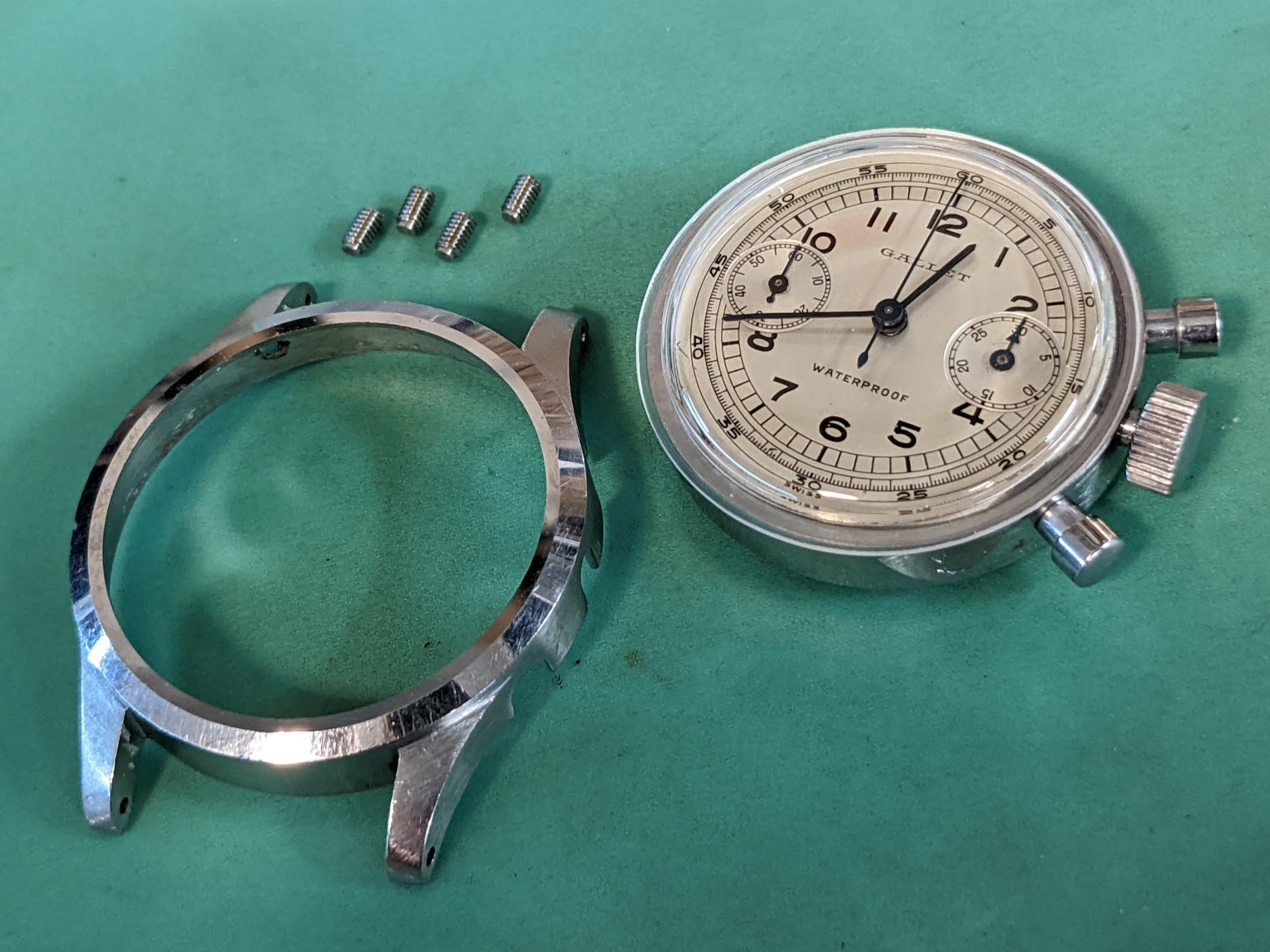
Image: Harris Horology
The Clamshell case explained
You can recognize the Clamshell case easily thanks to four screws hidden in the foot of each of the lugs. As visible in the picture above, the case consists of two parts. The bucket-like back slips inside the front piece, and all four screws in the lugs compress the two-part case when tightened. This unusual compression of lower and upper case sections provided novel protection of the dial and movement from the intrusion of water, dirt, dust, and caustic chemicals. The alleged waterproofness to 100 meters is something you’ll want to have verified today if you plan on taking this watch in water, though. This is especially because the price of these watches starts somewhere around $4,000 and goes north to $10,000.
Gallet World adds that it was “engineered in 1936 by Gallet watchmaker Philippe Weiss utilizing Schmitz Frères patent Brevet N° 189190…to protect the delicate inner mechanism from the adverse conditions found on the field of battle.” The picture above is a 1939 advertisement clipping from Jewelers’ Circular Keystone for the Gallet Clamshell. According to records, 1939 should be the year that the production of Gallet waterproof Clamshell Multichron started, and it lasted until 1951.
Versions
You can find a lot of different Gallet Clamshell watches with different dial designs. Those with simple white dials and black printing are the “lightest” versions. The inverse all-black dials with white or gold printing are the most highly regarded and not easy to find today. Finding them with perfect dials, original crowns, hands, and/or pushers is double the challenge. Notice also the variety of the hands and versions with both lumed and non-lumed dials.
Harvard and other Clamshells
David Laurence, the former Gallet representative in the US, published information on Gallet’s Facebook page stating that “until the mid-1940s, Gallet produced chronographs and stopwatches for Louis Goering of La Chaux-de-Fonds under the brand names The Sun, Harvard, and Imperial. Here is a catalog page from 1940 showing the models Gallet produced for Harvard that include privately labeled versions of the MultiChron 30M Clamshell and Regulator. Without looking closely at the name on the dials, this looks like a page straight out of a Gallet catalog,” says David. And he is right. Harvard Clamshells, which are almost identical to Gallet versions, pop from time to time, and you can score some sweet deals on them.
Back to the design
At the beginning of the article, I mentioned how much I like to wear my Gallet “broad-six” Waterproof M30 Clamshell. This week, I spent more time and effort on taking nice wrist shots, and I believe they show why just about perfectly. The position, shape, and size of the lugs are ideal for the case size. I love the slight curve on the outer side of the case. By the way, the lugs are drilled through. Some people don’t like this, but I always enjoyed its practical and visual aspects.
The magic of circles
This particular Gallet Clamshell M30 dial is pretty busy, with the red telemetric scale on the outer edge of the dial and the snail-style tachymeter boxed in the center. Only a few early chronographs have such a solid circular feeling. I guess it’s due to several thin black circles that strictly divide the elements and differentiate each track.
Reflections
In certain lighting conditions, the minute track seems to have the same finishing as the hour track. Move your wrist slightly, though, and it starts to look grayish. The more you move your wrist, the more details you can notice. Around the minute track is a highly polished and reflective ring that nicely “closes” the time inside and separates the red telemetric scale.
Other details
The thin, blued stick hands are beautifully minimalistic. They are so typical of Gallet watches, also through the subsequent decades. The simple Gallet logo confirms less can be more too. The small pump pushers are a bold contrast to the beefy crown, which I believe might be original to the watch. Other fine details include the arrow-tipped hand and “railway” surround for the chronograph minute counter. In addition, the “Waterproof” inscription counterbalancing the Gallet branding is very satisfying. So is the smooth operation of the Venus 150, the signature movement for Clamshell chronographs.
A note about watch sizes
I am sitting at the airport while writing this article. I flew to Denmark to meet a client and took two vintage watches. When going through the airport, I never leave one of them in my luggage, but I strap watches on both wrists. And often, I’ll end up wearing both of them for the entire trip. I noticed a client’s confused and studying look when he noticed that I was wearing two watches. He stared at my hands for about a minute to see what was happening. I like to puzzle people, and this is an amusing way to do so. Try it!
Anyway, for this trip, I wore a perfectly sized 37mm Sinn Decimal on one wrist and another perfectly sized 34mm Gallet Clamshell on the other. With that phrasing, I hope you can already guess what I am about to say. Any watch can be perfectly balanced in whatever diameter. It’s not only about extra millimeters but also the shaping, angling, lug style, width-to-length ratio, case style, crystal, and dial design. I think it’s a great idea for a standalone article to discuss the ideal size for a vintage watch. Stay tuned. Happy hunting!

